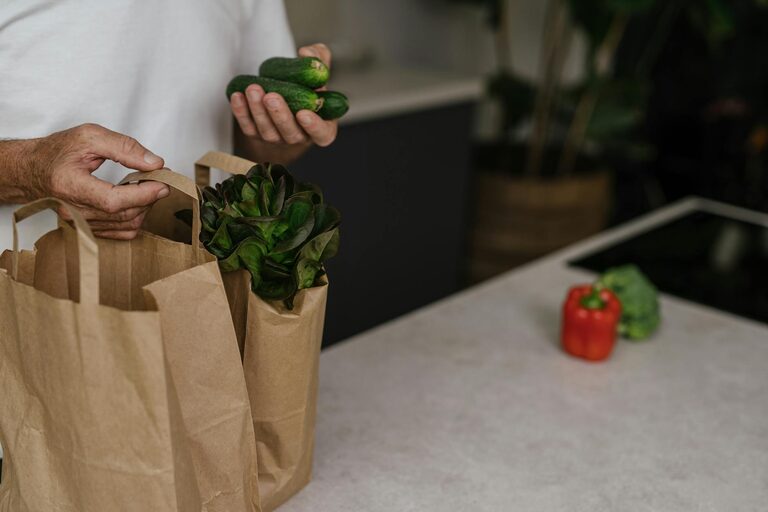Reducing food waste at home is not just good for your wallet—it’s also a great way to help the environment. When food goes to waste, all the resources used to produce, transport, and store it are lost too. Luckily, there are many simple and effective ways to cut down on food waste right in your kitchen. In this post, we’ll share practical strategies to minimize leftovers, manage groceries better, and make the most out of every meal.
Why Reducing Food Waste Matters
Food waste contributes to greenhouse gas emissions and strains natural resources like water and energy. Additionally, wasting food means wasting money you could spend on other necessities or save. By adopting mindful habits, we can all make a positive impact on the planet and our households.
Plan Ahead for Smarter Grocery Shopping
One of the biggest causes of food waste is buying more than you need. Here are ways to shop wisely:
Make a Detailed Shopping List
Before heading to the store, check what you already have in your pantry, fridge, and freezer. Then, create a list based on meals you plan to cook. This helps prevent impulse buys and duplicates.
Shop With Portion Sizes in Mind
Consider how many people you are feeding and choose quantities accordingly. For example, buy loose fruits and vegetables rather than pre-packaged bags, allowing better control over amounts.
Avoid Shopping When Hungry
You’re more likely to buy unnecessary foods if you shop when hungry. Try eating a snack beforehand to make more rational decisions.
Store Food Properly to Extend Freshness
Proper storage can significantly increase how long your food stays good.
Use Clear Containers and Label Everything
Store leftovers and opened items in transparent containers with dates. This makes it easy to identify what needs to be eaten first.
Keep Fridge Organized
Place newer items behind older ones so you use older food first. Also, store fruit and vegetables in designated drawers at correct humidity levels.
Maintain Ideal Temperatures
Set your fridge between 35-38°F (1.6-3.3°C) and freezer at 0°F (-18°C) for optimal freshness.
Get Creative With Leftovers and Scraps
Instead of throwing away leftovers, turn them into new meals or snacks.
Repurpose Leftover Ingredients
Combine cooked vegetables into soups or stir-fries. Use leftover rice to make fried rice or rice pudding. Turn stale bread into croutons or breadcrumbs.
Save Vegetable Peels and Ends
Collect peels, stems, and scraps in a container to make homemade vegetable stock, which is a great base for soups and sauces.
Freeze for Later
If you can’t eat leftovers right away, freeze them in portion-sized containers for future meals.
Practice Portion Control and Mindful Eating
Reducing the amount of food left uneaten on plates lowers waste.
Serve Smaller Portions
Start with modest servings and go back for seconds if still hungry. This approach decreases the chance of uneaten food.
Encourage Family to Take Only What They Will Eat
Teach children and others to take reasonable amounts at mealtime. Offering build-your-own plates can help guests choose what they prefer.
Monitor Expiration Dates Wisely
Understanding food labels can prevent premature disposal.
Learn the Meaning of “Best By” and “Use By”
“Best By” usually indicates quality, not safety. Many foods are still good to eat past this date. “Use By” relates to safety, particularly for perishable items.
Rotate Stock Regularly
Place newer groceries behind older ones so you use those that expire first.
Compost Food Waste
Even with best efforts, some food scraps are unavoidable. Composting turns this waste into nutrient-rich soil.
Start a Simple Compost Bin
Use kitchen scraps like fruit and vegetable peels, coffee grounds, and eggshells. Avoid meat and dairy products which can attract pests.
Use Compost in Your Garden
Compost nourishes plants naturally and reduces the need for chemical fertilizers.
Educate and Involve Everyone in Your Household
Reducing food waste is easier when everyone participates.
Hold Family Discussions
Talk about why wasting food matters and share tips. Involve children in meal planning and preparation.
Make It a Challenge
Set goals to reduce waste each week and celebrate progress together.
—
By taking a few simple steps, you can reduce food waste at home significantly. Not only will you save money, but you’ll also contribute to a healthier planet. Start with planning your meals, storing food properly, and getting creative with leftovers. Every small effort counts toward a sustainable lifestyle.



